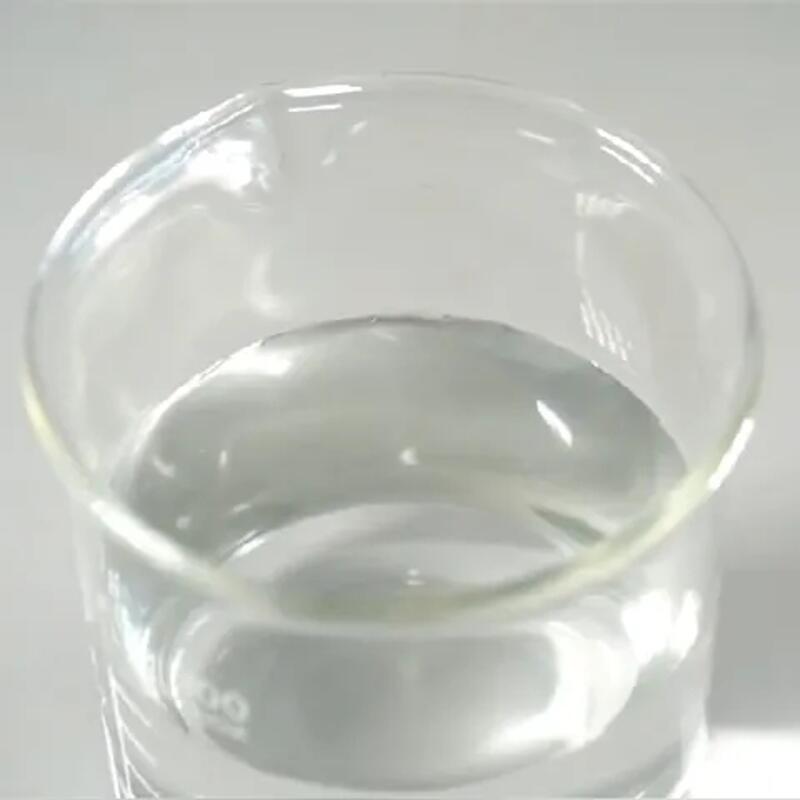1 case of continuous epidural anesthesia management of two-child combined heart function in patients with dwarf disease
-
Last Update: 2020-06-21
-
Source: Internet
-
Author: User
Search more information of high quality chemicals, good prices and reliable suppliers, visit
www.echemi.com
1Case reportpatient, 37 years of age, admitted to the hospital on 28 February 2018 due to chest tightness and gas tightness for 3 weeks of pregnancyThis pregnancy is an in vitro fertilization (IVF) after the twin pregnancy, the patient refused to perform the abortionPregnant 25 plus weeks, began to appear chest tightness, gas tight, night can not lie flat, in the hospital after treatment of the disease improved discharge3 days ago, the patient again appeared chest tight, gas tight, weak, night pillow rest, occasionalcough cough sputum, white foam sputum, accompanied by mild edema of the lower extremities15 years ago due to "left fallopian tube pregnancy" in the outer hospital "by the left side of the abdominal fallopian tube excision." HR104/min after admission, R20/min, BP134/72mmHg, SPO2 95% (no oxygen absorption)The patient is 139 cm tall, has a body mass of 50kg, has a mild post-convex deformity of the thoracic spine, is still well-balanced in his limbs, and has normal intellectual developmentNo positive signs were shown in the heart testobstetric specialist check-up: palace height 35 cm, abdominal circumference 94 cm, fetal position, fetal heart rate 145/min, 152/minThe patient occasionally had a contraction and refused pelvic exit measurements and vaginal examinationsArterial blood gas analysis showed oxygen fractional pressure of 131mmHg, metabolic acid and respiratory alkali poisoning intake period, blood routine show Hb105g/L, myocardial enzymes and B-type urinary sodium peptide (BNP) and other obvious abnormalities;admission diagnosis: G2P plus 10 pregnancy 32 s 6 weeks head-to-head double live birth waiting to be given; Patients admitted to the hospital 3 days later, the patient chest tightness, gas tightness and other discomfort slightly improved, but still can not lie flat, hearing double lung breathing sound slightly thick, unheard and obviously wet toneAfter discussion in obstetrics, critical medicine and anesthesiology, it is proposed to perform a caesarean section on epidurals with epidural anesthesiaAfter entering the operating room, HR110/min, BP120/80mmHg, R20/min, SPO2 95% (no oxygen absorption), mask absorption 6L/min, SpO2 at 97% to 99%Give medazole 1mg appropriate sedation, and in the local Lidoca in the post-anaesthetic artery puncture tube, measured with the co-ordinated blood pressure analysis, pH7.529, PCO2 27.7, BE0mmol/L, Hb9.2g/L, SO2 99% place the patient in the left side of the head-up 30-degree ramp, with an epidural puncture tube (L1-L2 up, L3-L4 down) in the L1-L2 and L3-L4 clearances, respectively After successful operation, the patient will be placed in a 30-degree slope lying, the right hip pad is high, and sent a person to hold the patient's abdomen to the left, to prevent the occurrence of reclining low blood pressure syndrome In the upper and lower tubes were injected with 2% Lidoca in 3ml test volume, observed 5 minutes without abnormality, and then in the upper tube divided into 2 injections, each interval of 15 minutes, 1st 4ml, 2th 3ml, injected a total of 7 ml of 2% Lidocain, in the lower tube 2 injections, each interval of 15 minutes, each time 4 ml, a total of 1.5% Lidobe8, finally adjusted to the Tml 6 t-plane During the patient's blood pressure slightly decreased, fluctuations in 100 to 110/60 to 70mmHg, HR110/min or so, panic, chest tightness and other discomfort than before anesthesia relief then began with surgery and the fetus was removed in the 5th and 7th minutes, with Apgar ratings of 10-10-10 and 9-10-10, respectively After the birth of the fetus, blood pressure dropped to 100/40mmHg, HR dropped to 70/min, patients complained of mild discomfort in the front of the heart, immediately static injection of ephedrine 6 mg, BP, HR gradually rebounded In the operation of invasive blood pressure maintained at 120 to 140/70 to 80mmHg or so, HR fluctuations in 90 to 110/min, SpO2 stable at 100% (mask oxygen absorption) The operation took a total of 45 minutes, 500 ml of balance fluid, blood loss 500 ml, urine volume of 100 ml, pre-room review of arterial blood gas, pH7.450, PCO2 34.9, BE0mmol/L, Hb9.2g/L, SO2 100%, surgery transferred to ICU to continue observation treatment transferred to the ICU to prevent infection of cephalosporine sodium, ammonia bromide sputum, maintain water electrolyte balance, promote intestinal function recovery and other supportive treatment, patients have stable vital signs, did not complain of special discomfort, in the 4th day after surgery transferred back to the general ward to continue observation treatment Review of myocardial enzymes and cardiac color super did not see obvious abnormalities, in the 9th day after surgery was successfully discharged from the hospital 2 Discussion during normal pregnancy, a series of changes in the hemodynamics of pregnant women, such as increased blood volume, peripheral vascular resistance and blood pressure first drop and then pick up, increased heart rate, and increased heart output In particular, blood volume will increase by 50 per cent in the third childbirth than before pregnancy, and by a further 33 per cent if there are two births The time and manner in which a pregnant woman with a heart function terminates a pregnancy should be considered by the obstetrician in combination with obstetric factors: unless the medical treatment is ineffective and the patient's hemodynamic condition deteriorates, early termination of pregnancy is not necessary; combined with the specific situation of pregnant women, the patient is small, only 139 cm, coupled with twin pregnancy is one of the high-risk factors to induce adverse neonatal events, and one of the fetal position is horizontal, blood capacity load is too heavy, has appeared chest tightness, sit-up breathing, double lower limb edema and other early heart function Symptoms and signs, even if the admission to check myocardial and cardiac color super did not see obvious abnormalities, continued pregnancy is very likely to lead to symptoms of sexual exacerbation, and the appearance of cardiac failure or even development to heart failure, so dexamethast edifying the lung maturity, choose to terminate the pregnancy as soon as possible caesarean section, taking into account the mother and child transfer For pregnant women with reduced heart function reserves, the objectives of anesthesia management include: avoiding cardiomyopathy caused by excessive anaesthetic, maintaining normal blood volume, reducing the increase in peripheral vascular resistance and reducing the high tension and emotional ciital of the peripheral blood muscle wall There is no international consensus on the optimal choice of anaesthetic techniques for pregnant women If general anaesthetic is chosen, the inevitable negative muscle action of the general anaesthetic may induce heart failure during surgery has documented that if epidural anesthesia is implemented slowly and carefully, the changein in the front and rear load of the heart will help to improve the condition of decreased ventricular function And the double tube continuous epidural anesthesia than single tube continuous epidural anesthesia blocking effect is more comprehensive, can significantly reduce the mother experience the mother's feeling of vulva pull discomfort when the birth of the baby head, at the same time, a small number of drugs will be conducive to maintaining the patient's hemodynamic stability If this type of patients line lumbar or lumbar hard joint anesthesia, in order to avoid the occurrence of intercom blocking, it is recommended to inject opioids in the subcavity of the cobweb instead of local anaesthetic, which can provide sufficient analgesic strength at the same time, reduce the occurrence of hemodynamic instability, thereby reducing the pain caused by the high tension of the heart muscle wall and intercomal excitement weighed the pros and cons and combined with the actual situation of clinical operation of our hospital, this case of pregnant women anaesthetic method decided to use double-tube continuous epidural anesthesia For patients at high risk of heart failure, perioperative monitoring focuses on maintaining circular function stability Therefore, we monitored the incidence of invasive arterial pressure, the implementation of anesthesia focused on preventing the occurrence of reclining hypotension syndrome, because when lying on the back, the pregnant uterus can compress the cavity veins, resulting in a reduction of venous reflux, heart output reduced by up to 25% At the same time, in order to prevent the increase of heart reflux, that is, the increase of the pre-cardiac load induced heart failure, we use slope lying, while capacity management we have adopted restrictive infusion measures, when patients have circulation function inhibition, timely give ephedrine intervention treatment Because this type of patient son-in-patient 24 to 48 hours after delivery may still occur heart function compensation, so after surgery need to be transferred to the intensive care unit under close monitoring under observation and treatment patient's postoperative re-payment prompt, for the combined heart function is incomplete maternal, comprehensive preoperative assessment, especially maternal heart function and risk assessment, reasonable anaesthetic methods and medication, optional double tube continuous epidural anesthesia, follow the principle of sub-secondary, small, slow administration, auxiliary With complete intraoperative monitoring, according to the invasive arterial pressure and central vein pressure, to prevent the heart before and after the heavy fluctuations, to avoid drug-induced circulation system inhibition, with careful postoperative treatment, as well as close collaboration of multiple departments, is an important guarantee to ensure the patient's smooth passing through the perinatal period
This article is an English version of an article which is originally in the Chinese language on echemi.com and is provided for information purposes only.
This website makes no representation or warranty of any kind, either expressed or implied, as to the accuracy, completeness ownership or reliability of
the article or any translations thereof. If you have any concerns or complaints relating to the article, please send an email, providing a detailed
description of the concern or complaint, to
service@echemi.com. A staff member will contact you within 5 working days. Once verified, infringing content
will be removed immediately.







